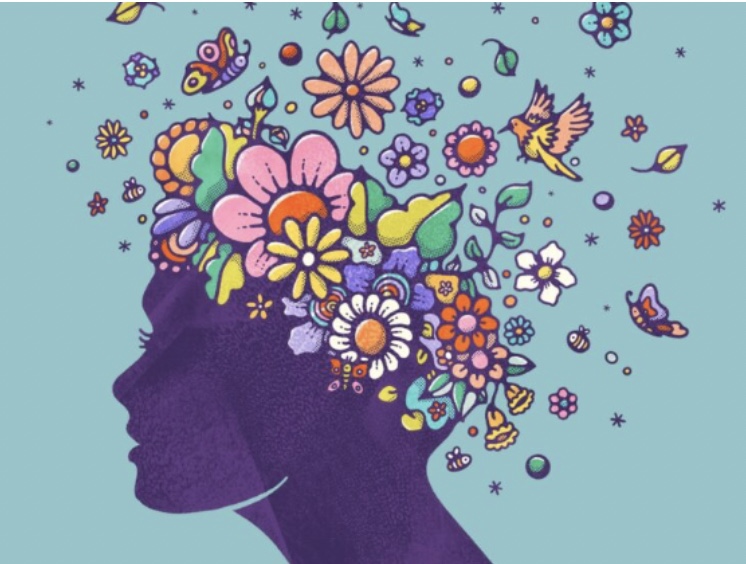Image Citation: (Capital Services, n.d.) Alt Text: A human silhouette in purple, with flowers, butterflies, and birds blooming from the head, symbolizing a flourishing and positive mindset. The background is light blue
- Objective: To deepen understanding of how chronic stress impacts specific brain regions and their functions through a collaborative and visual activity.
- 1. Divide into small groups (3-4)
- 2. Review Diagram of Brain and read through worksheet prompts (provided below in two formats):
- PDF: https://drive.google.com/file/d/1FzAxNSbdv0-qeQN4jxaIWVG1ZqnMRy7L/view?usp=sharing
- Word Docx: https://docs.google.com/document/d/1S7ThXfnCk23rWLdhqYihyppV2-evyGPX/edit?usp=sharing&ouid=117186559892525735975&rtpof=true&sd=true
3. Each group has the task of writing a brief description of how prolonged stress affects these three brain regions:
a. amygdala
b. hippocampus
c. prefrontal cortex
(as well as adding an additional region of the brain) → citing sources used for information. Information should be written directly on the group’s brain diagram. (You can use the diagram provided or an alternative diagram that clearly shows the relevant brain regions).
4. Add specific examples of how these impacts might manifest in daily life.
For instance: Hippocampus: difficulty remembering information for exams
5. Groups display there brain maps (upload to class platform)
6. Students view each other’s maps and fill out a worksheet that corresponds to other groups’ work (provided below in two formats):
PDF: https://drive.google.com/file/d/1fF-GcrzAumDHJY4HDPc9XNHSgNFhO2sF/view?usp=sharing
7. Conclusion
By understanding the role of the HPA axis and the role of cortisol on various brain regions, we can see why stress management is essential for protecting both brain health and overall well-being. Within the next section of this micromodule we will discuss mindfulness techniques that can help mitigate some of the stress that you, as a college/university student, may feel is unavoidable.
To view how these elements of the micro module will be assessed click here.
